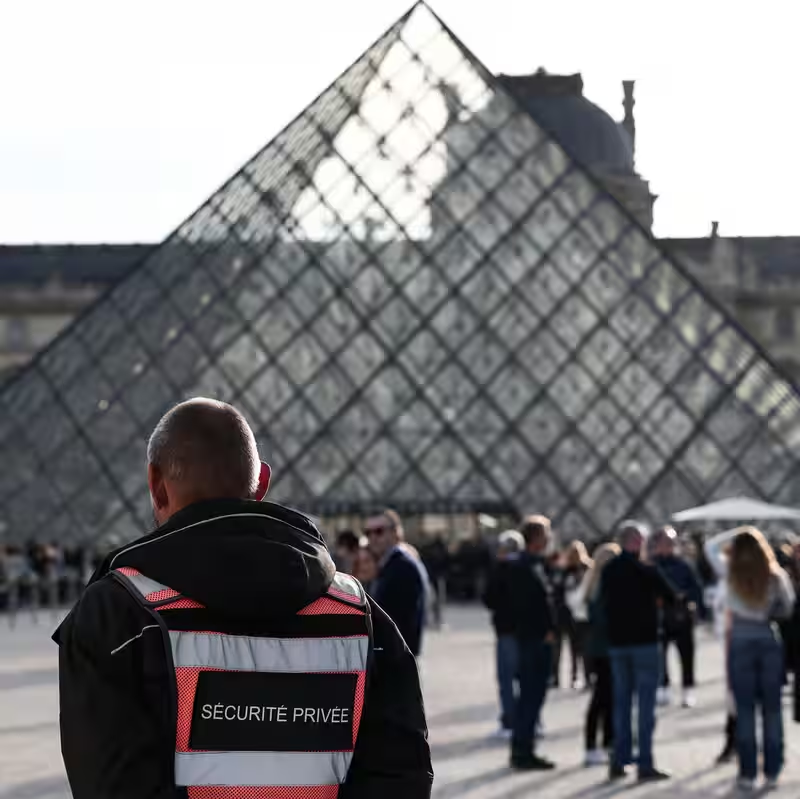Table of Contents
- The Paradox of High-Vis Clothing
- Louvre Heist: How It Happened
- Why Safety Vests Work for Criminals
- A Global Pattern of Disguise
- Psychology Behind the Invisibility
- Can Anything Be Done?
- Sources
The Paradox of High-Vis Clothing
Bright yellow, orange, or neon green safety vests were invented to make workers impossible to miss—on construction sites, highways, or emergency zones. But today, that very visibility has become a criminal’s camouflage. Experts say the safety vest has undergone a bizarre transformation: from a symbol of caution to a tool of deception.
“High-vis clothing carries a strange paradox,” said Caroline Stevenson, program director at the London College of Fashion. “It’s meant to make the wearer visible in hazardous spaces, yet often it renders them socially invisible.”
Louvre Heist: How It Happened
On Sunday, two thieves infiltrated the Louvre Museum in Paris and walked away with $102 million worth of jewelry. Their secret? They wore standard-issue neon safety vests—garments so common in France that no guard batted an eye.
In a city where construction crews, delivery drivers, cyclists, and even motorists are required by law to carry high-visibility vests, the criminals blended seamlessly into the background. Security footage shows them moving confidently through restricted areas, mistaken for maintenance staff or inspectors.
Why Safety Vests Work for Criminals
Unlike masks or hoods, which draw suspicion, a safety vest signals legitimacy. “If you’re dressed as a construction worker, people assume you belong,” said Arthur Brand, a Dutch art crime investigator known as the “Indiana Jones of the art world.”
These vests exploit what psychologists call “authority bias”—the human tendency to defer to anyone who appears to have a role or uniform. Add a clipboard or tool belt, and the illusion is complete.
A Global Pattern of Disguise
The Louvre isn’t an isolated case. In 2015, a gang stole $30 million in cash, gold, and jewels from a London safe deposit vault—one thief wore a fluorescent jacket labeled “Gas.” In Boston’s infamous 1990 Isabella Stewart Gardner Museum heist, robbers posed as police officers. More recently, Dutch con artists have impersonated police to “secure” valuable paintings from collectors’ homes.
“Dressing as someone in authority is the oldest trick in the book,” Brand noted.
Psychology Behind the Invisibility
Dr. Craig Jackson, professor of occupational health psychology at Birmingham City University, explains that high-visibility gear has become a “cloak of invisibility” because it’s so normalized. “We see these vests every day—on roads, at airports, outside museums. Our brains stop processing them as noteworthy.”
He adds that social class plays a role: “A middle-class museum visitor won’t question a group of working-class-looking men in vests. There’s an embarrassment factor—they don’t want to seem rude or out of place.”
Can Anything Be Done?
Some experts propose tech-based fixes, like embedding QR codes in official vests that verify a wearer’s identity when scanned. Others suggest stricter on-site credentialing or color-coded zones for authorized personnel.
But Jackson is skeptical: “Even with safeguards, if someone’s wearing a safety vest, we just don’t notice them.”
For now, museums, airports, and high-security sites may need to rethink what “invisibility” really looks like—and how something designed to stand out can, in fact, help thieves vanish in plain sight.




